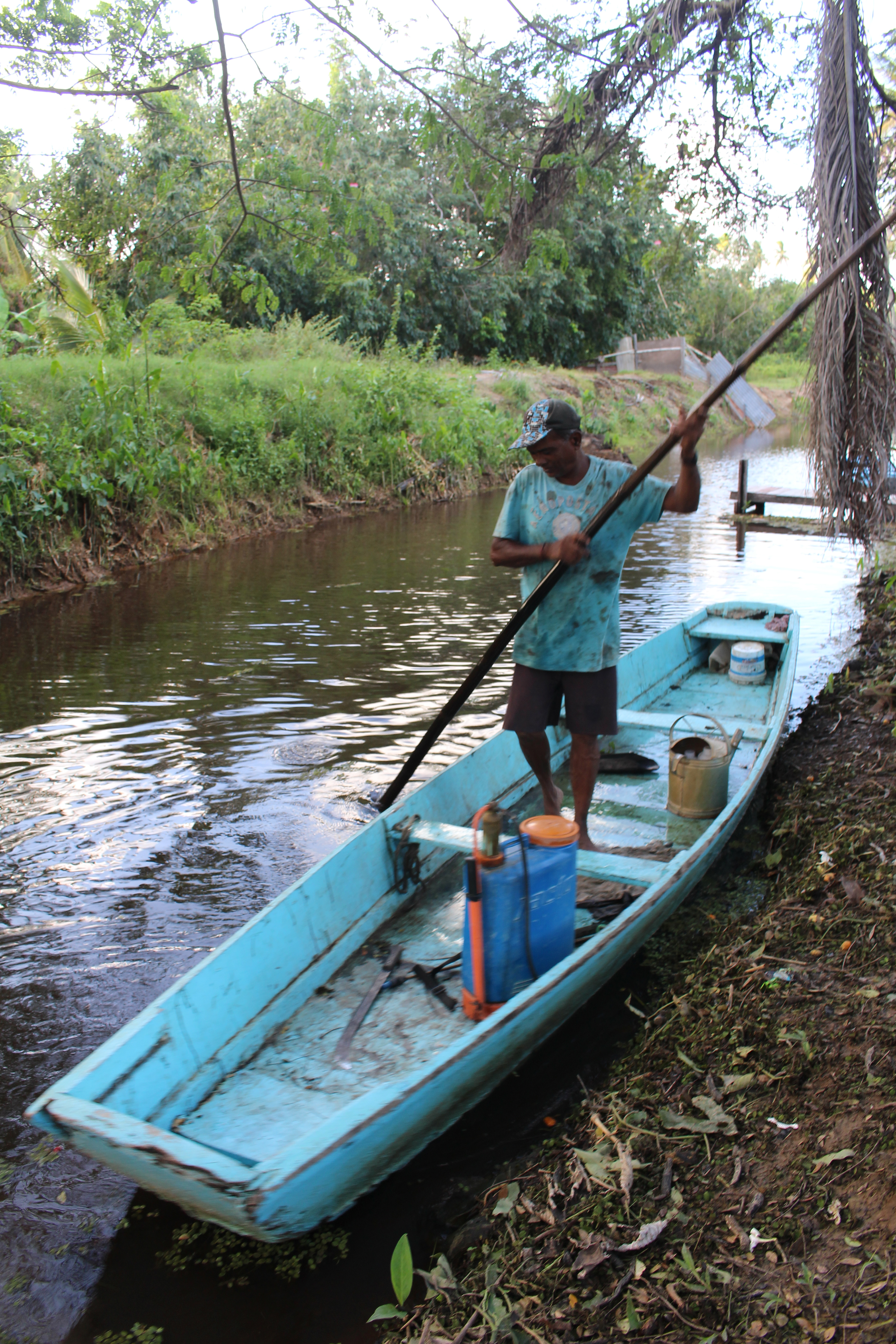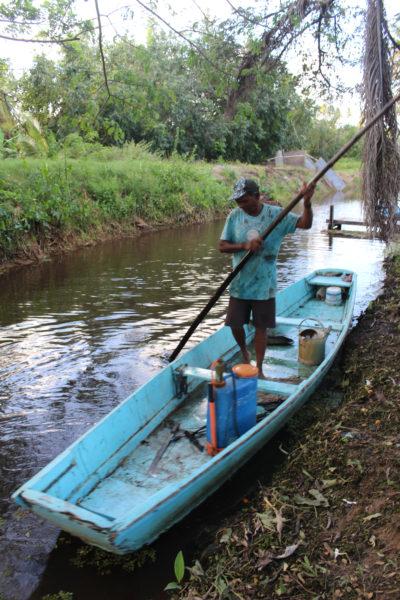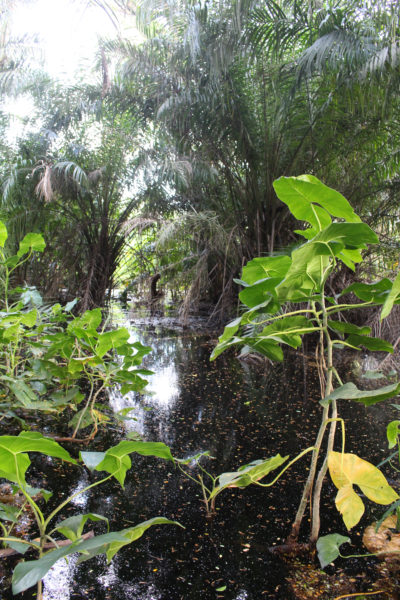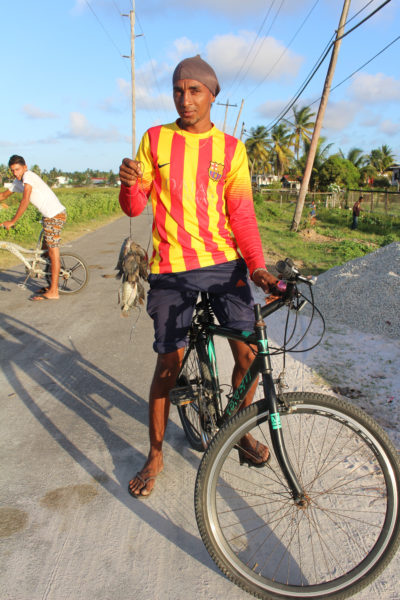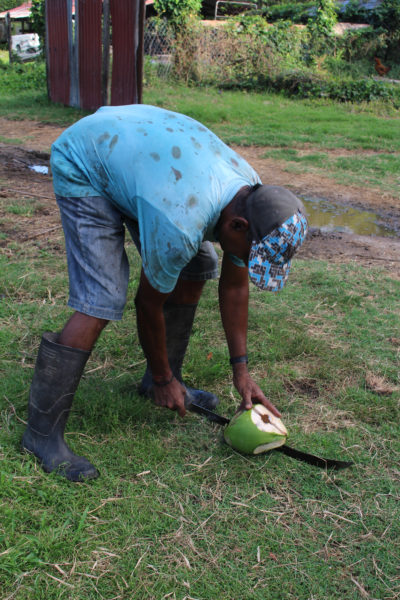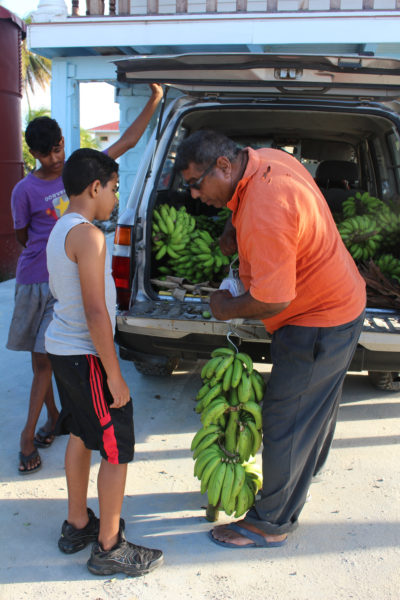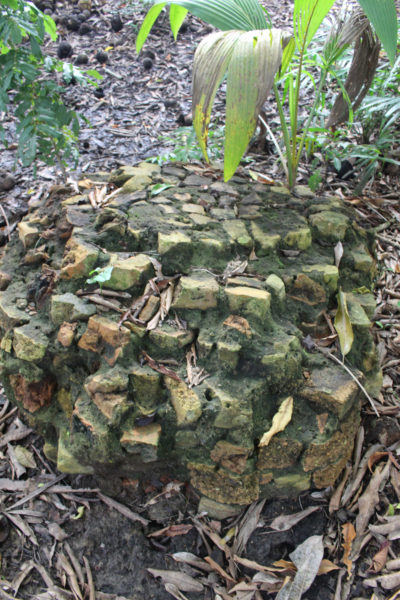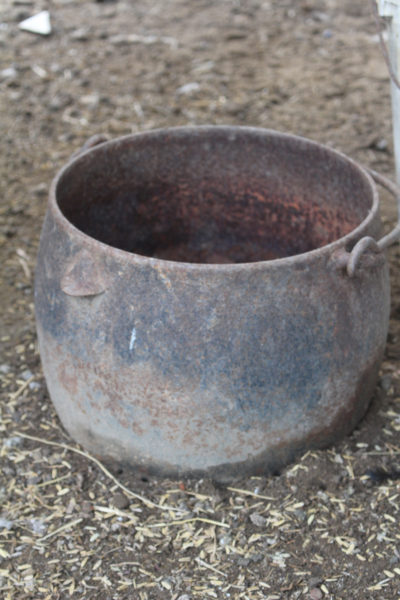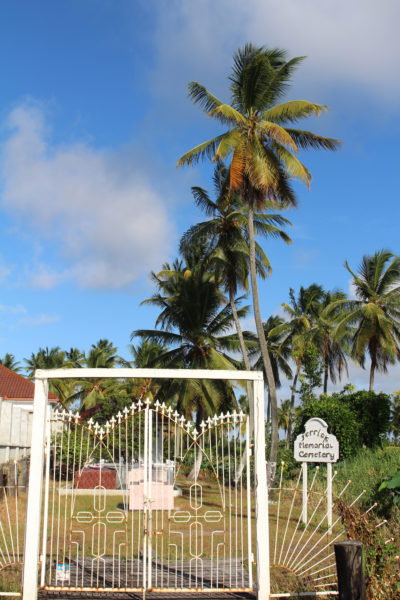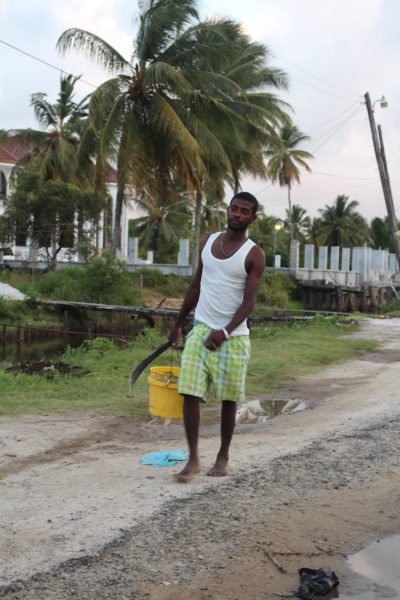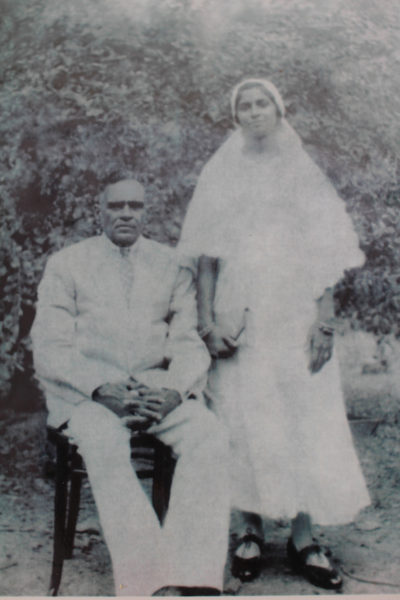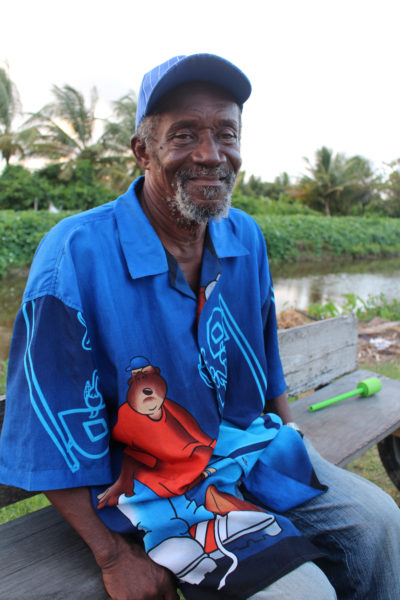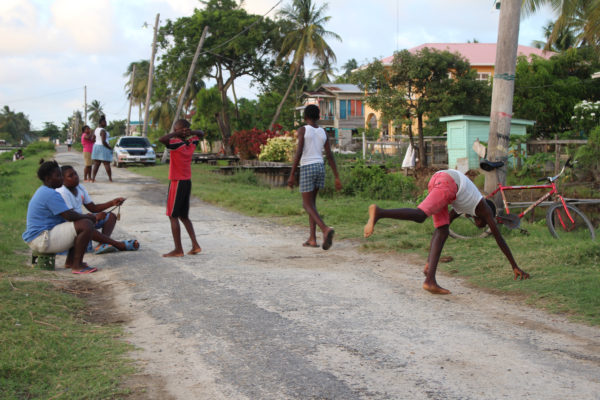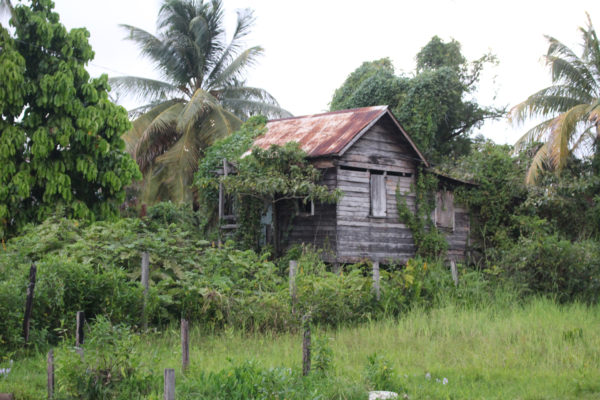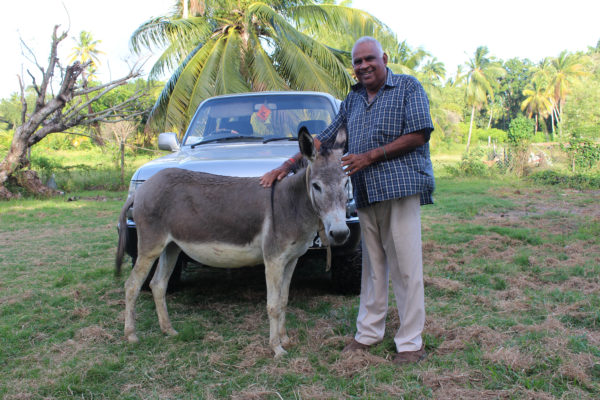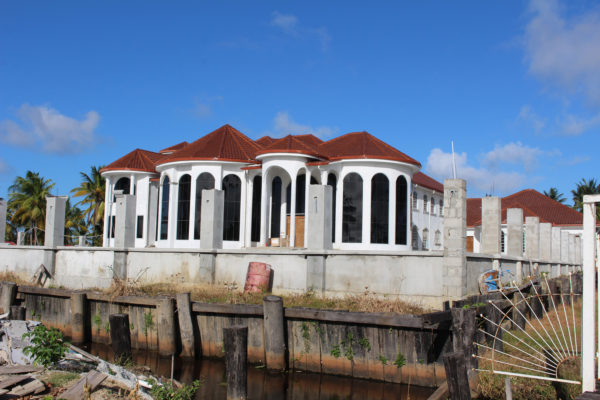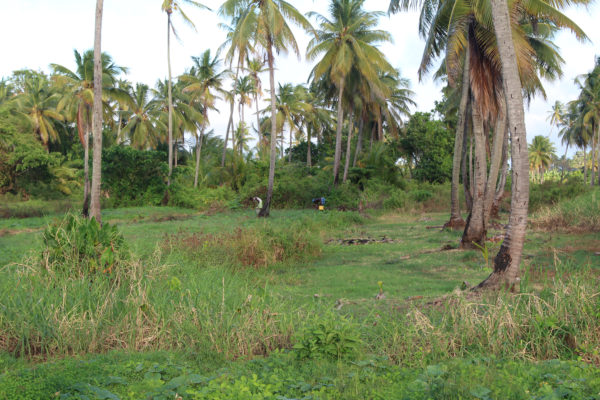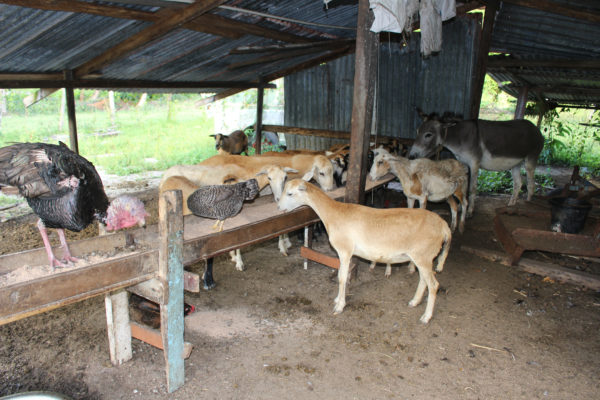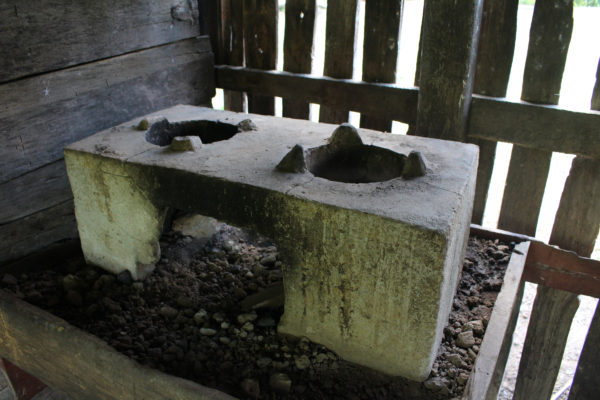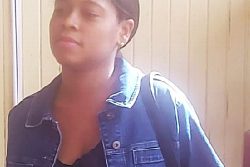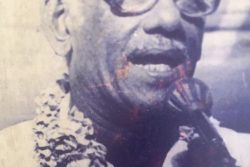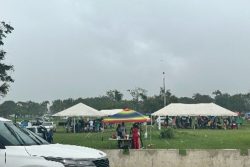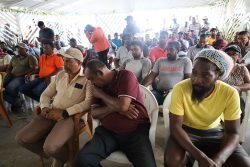Photos by Joanna Dhanraj
Situated on the East Coast Demerara, Bee Hive is hemmed by the Atlantic Ocean, a coconut plantation and Clonbrook and Greenfield; it is 30 kilometres away from the capital and home to more than 1,500 residents.
Bee Hive is divided into three sections: the seawall to the public road, the Railway Embankment to the Mahaica Canal and the Mahaica Canal to the coconut plantation.
It so happened that as soon as I disembarked the minibus and crossed into Bee Hive, the first resident I met was retired high court judge Nandram Kissoon, who was sitting in front of his open front door enjoying the sea breeze. He did not say who he was then, but began to recount some of Bee Hive’s history.
He said that in 1892 14-year-old Siri Kissoon departed his home in India and boarded the Jura for British Guiana for what was supposed to be a five-year contract as an indentured labourer. He was indentured to La Bonne Intention, but when his contract ended, he stayed on and became the manager of Plantation Hope.
In 1934, Siri bought Plantation Bee Hive from Ramsagar Singh at a cost of $7,800. At the same time he also purchased the Sugar Factory Yard at Clonbrook. However, it was not until the 1960s that two of his three sons, Harrypersaud and Rampersaud, finished paying for Bee Hive. They had inherited the estate after Siri’s death in 1943.
Said to have been a jungle when purchased, Bee Hive was cleared by Harrypersaud and Rampersaud and other volunteers with axes.
Prior to Siri’s death, plots of land were sold to persons wanting to reside at the seawall/public road section, while the Railway Embankment/Mahaica Canal section was leased to former indentured labourers and their descendants and the Mahaica Canal/Coconut Plantation section to the former slaves and their descendants. This particular section in the village is now called Central Bee Hive.
Bee Hive went from planting sugar to rice to coconuts.
It was not until the 75-year-old finished sharing about Siri and Bee Hive that he introduced himself as Nandram Kissoon, grandson of Siri Kissoon and produced documents with the signatures of Siri and Ramsagar Singh.
“There are still remnants of the sugarcane factory and close by is a pond that is still called the Coolie Pond. That was where the coolies got their drinking water from. The coolie population lived around the factory,” he said.
He was one of 12 children born on the farm close by the factory. He recalled walking two miles barefoot to Ann’s Grove Roman Catholic School in patched trousers to get his primary education. His family later moved closer to the railway line and the trains ran right in front of their home and stopped at the station a short distance away in Clonbrook.
His father and an uncle had attended a Presbyterian school, while another uncle attended Queen’s College, but Kissoon attended the Indian Education Trust (now Richard Ishmael Secondary School). His father, Harrypersaud, could not afford to buy train passes for all of his 12 children, so they often ‘poped’ (stole rides on) the trains.
“The Lutheran church started under this bottom-house,” he recalled. “After church services we oiled our feet with coconut oil and ran to catch the temple after lunch.
“We were taught that the only wealth that we must pursue is contentment and spiritual knowledge and all will flow from that. We attended all the Christian churches around starting from the Catholic church to the Presbyterian but the principles of Hinduism guided us throughout life.
“A philosophy to always have is ‘work for nothing, save a penny and you will derive all material benefits.’”
Meanwhile downstairs, a friend turned up to purchase bananas from a farmer who plants on a piece of land leased to him by the Kissoons. As they weighed bunch by bunch, two little boys who looked on were tasked with adding the figures of each bunch by Kissoon who insisted that the boys do the calculating instead of the adults.
“My mother mind sheep, cow, goat, and yard fowl. We produced rice and all our greens so we had sufficient meat, eggs, milk and greens,” Kissoon said once back upstairs.
He offered me cool scalded cow’s milk which he boasted getting from his pet cow Dularie and added some of the milk to chilled soursop he picked at his farm in the backdam.
He continued, “On Saturdays and Sundays we had to go and collect wood for the fireside. My mother had a four-hole fireside where she and two of my sisters-in-law made 42 rotis every day.”
The retired judge took upon himself the task of giving me a tour of Bee Hive.
Along the dam running parallel to the plantation, we drove by French Tamarind trees also known as Six o’clock trees growing over the black water canal.
At the farm, Kissoon’s pet donkey Sheba stood on a bridge below a laden plum tree. Oblique to where he stood, bamboos, used for picking coconuts, were braced against a jamoon tree.
Beyond the farm is an almost jungle-like section of Bee Hive. Some of the trees there are rumoured to be centuries old. Below one of the trees lay the remains of Kissoon’s parents and three of the siblings. A bit further along the remnants of the sugar factory stood firmly in the ground. Close by the Coolie Pond seemed eerily still in the shadows of the trees around.
Back on the farm a farmer who had just returned from his farm farther down the backdam filled a trough with feed and called the animals in Hindi; they came running, sheep, donkey, turkeys, and hen and ate side by side. Outside Dularie and her calf Boodhoo took turns lapping up molasses from a bucket.
On our way back out, farmers could be seen watering their cash crops growing among the coconut trees.
At the head of the Coconut Plantation is the Jerrick Family Cemetery. The Jerricks are one of the oldest families in the village. The oldest living Jerrick was ill at the time. However, I caught up with James Adams, a relative, who was enjoying the afternoon outside chatting and looking on while some boys played a game of marbles.
James moved from Ann’s Grove to Bee Hive when he was three years old. Growing up he attended Ann’s Grove Methodist School. He is one of ten siblings; only three are still alive.
“I have eight children and 12 grandchildren and two great grandchildren,” Adams said.
He recalled that years ago, “We use to get water from the canal. The water use to come black, black, black. When yuh bathe inside police ah run yuh. The water was only to drink. The water was supposed to be dip for bathing.”
At that time, the women delivered their babies at home, and a nurse would travel to the village for that purpose. When the nurse couldn’t make it fast enough, a late resident by the name of ‘Cousin Katie’ took on the job of delivering the babies. She was also the woman who took care of the mother and baby until the ‘nine day’. Adams related that during that crucial early period, mothers and their babies could easily contract pneumonia. To avoid this all holes and creases in the home were blocked to prevent “draft from blowing in”.
Garlic skins, onion skins and “Brian plimpa [thorns]” were hung about the house to ward off ole higues, Adams shared, adding that he knew a few of them. Smiling, he called three names; two of them were male.
There has been one notable murder that he recalled; a man called ‘Crab Bush’ who killed his wife Kellian after suspicions of infidelity. The man is no longer alive but did serve his time in jail. According to Adams, this serves as a reminder to young men in the village who might be thinking of such acts that consequences are sure to follow.
He said that one disadvantage of living at Beehive was that here were many unemployed youths.
Kissoon, who stood nearby said, “There is a problem with children leaving school too. Children in those days were caned and because of this they were disciplined and brought up right. There were few secondary schools then and they were in Georgetown; now there are many secondary schools and children don’t want to go.”
James continued, “I would like fuh see people get wuk. Most of dem boys ah bush but bush nah sell now.”
It was also mentioned that a few of the young men in the area do drugs and a rehabilitation centre, and somewhere they could learn a trade would be welcomed. On the other hand, most of the villagers farm and because of this the village always has food. As if to prove this point, two farmers approached, one with a young squash in his bucket which he promptly gave away. Kissoon said Bee Hivers don’t call the vegetable squash, they call it sheep.
And so the World Beyond Georgetown said goodbye to Bee Hive, the little paradise where not just greetings and smiles are freely given away but the produce its farmers sweat hard for as well.
